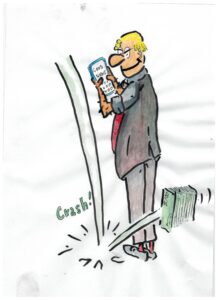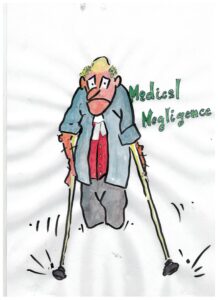Legal Principles of an appeal in the nature of ‘rehearing’
An appeal is in nature a rehearing.
A court may in certain circumstances receive fresh evidence on the hearing of such an appeal, but no application was made to lead fresh evidence in this appeal. The nature of such an appeal was examined by the High Court in Fox v Percy (2003) 214 CLR 118, where, in a frequently quoted passage, the plurality (Gleeson CJ, Gummow and Kirby JJ) said at [22]–[23] and [25]:
The nature of the “rehearing” provided in these and like provisions has been described in many cases… The “rehearing” does not involve a completely fresh hearing by the appellate court of all the evidence. That court proceeds on the basis of the record and any fresh evidence that, exceptionally, it admits. No such fresh evidence was admitted in the present appeal.
The foregoing procedure shapes the requirements, and limitations, of such an appeal. On the one hand, the appellate court is obliged to “give the judgement which in its opinion ought to have been given in the first instance”. On the other, it must, of necessity, observe the “natural limitations” that exist in the case of any appellate court proceeding wholly or substantially on the record. These limitations include the disadvantage that the appellate court has when compared with the trial judge in respect of the evaluation of witnesses’ credibility and of the “feeling” of a case which an appellate court, reading the transcript, cannot always fully share. Furthermore, the appellate court does not typically get taken to, or read, all of the evidence taken at the trial. Commonly, the trial judge therefore has advantages that derive from the obligation at trial to receive and consider the entirety of the evidence and the opportunity, normally over a longer interval, to reflect upon that evidence and to draw conclusions from it, viewed as a whole.…
Within the constraints marked out by the nature of the appellate process, the appellate court is obliged to conduct a real review of the trial and, in cases where the trial was conducted before a judge sitting alone, of that judge’s reasons. Appellate courts are not excused from the task of “weighing conflicting evidence and drawing [their] own inferences and conclusions, though [they] should always bear in mind that [they have] neither seen nor heard the witnesses and should make due allowance in this respect”.
[Citations omitted]
The plurality then quoted from the decision of the majority in Warren v Coombes (1979) 142 CLR 531 at 551:
[I]n general an appellate court is in as good a position as the trial judge to decide on the proper inference to be drawn from facts which are undisputed or which, having been disputed, are established by the findings of the trial judge. In deciding what is the proper inference to be drawn, the appellate court will give respect and weight to the conclusion of the trial judge but, once having reached its own conclusion, will not shrink from giving effect to it.
In the case of Abalos v Australian Postal Commission (1990) 171 CLR 167 McHugh J, with whom Mason CJ, Deane, Dawson and Gaudron JJ agreed, said concerning the nature of such an appeal at 178:
In S.S. Hontestroom v S.S. Sagaporack [1927] A.C. 37 at p. 47, Lord Sumner pointed out that:
“not to have seen the witnesses puts appellate judges in a permanent position of disadvantage as against the trial judge, and, unless it can be shown that he has failed to use or has palpably misused his advantage, the higher Court ought not to take the responsibility of reversing conclusions so arrived at, merely on the result of their own comparisons and criticisms of the witnesses and of their own views of the probabilities of the case. The course of the trial and the whole substance of the judgment must be looked at, and the matter does not depend on the question whether a witness has been cross examined to credit or has been pronounced by the judge in terms to be unworthy of it. If his estimate of the man forms any substantial part of his reasons for his judgment the trial judge’s conclusions offact should, as I understand the decisions, be left alone.”
Consequently, where a trial judge has made a finding of fact contrary to the evidence of the witness but has made no reference to that evidence, an appellate court cannot act on that evidence to reverse the finding unless it is satisfied “that any advantage enjoyed by the trial judge by reason of having seen and heard the witnesses, could not be sufficient to explain or justify the trial judge’s conclusion”: Watt or Thomas v Thomas [1947] A.C. 484, at p. 488.
In cases where views have been conducted. Section 54 of the Evidence Act 2011 (ACT) provides that a court may draw any reasonable inference from what it sees, hears or otherwise notices during a view. In which case a primary judge may have an advantage compared to the court hearing the appeal.
In Pledge v Roads and Traffic Authority (2004) 205 ALR 56, Callinan and Heydon JJ, with whom McHugh ACJ, Kirby and Hayne JJ agreed, said, concerning the equivalent provision in the Evidence Act 1995 (Cth) at [49]:
Even before the enactment of the Evidence Act, appeal courts customarily accorded significance to a demonstration or view at first instance.
[ELLIOT JAMES LAWRENCE STONE v THE OWNERS – UNITS PLAN 1214 & ORS
[2014] ACTCA 14 (19 May 2014)]
SEARCH BLOG POSTS
LATEST BLOG POSTS
- Updated product safety mandatory reporting guidance for suppliers now available
- Pleading fraud – cause and effect is essential
- Does the Trustee’s right of indemnity have priority over the right of beneficiaries in relation to assets?
- Rules of war (in a nutshell) | The Laws Of War
- MH370 Final Report
Past Blog Posts
- December 2021
- September 2021
- August 2021
- May 2021
- April 2021
- March 2021
- August 2020
- February 2020
- September 2019
- February 2019
- December 2018
- July 2018
- April 2018
- December 2017
- May 2017
- February 2017
- December 2016
- November 2016
- October 2016
- September 2016
- August 2016
- April 2016
- March 2016
- October 2015
- September 2015
- August 2015
- May 2014
- April 2014
- March 2014
- January 2014
Categories
- Appeals
- Artificial Intelligence
- Aviation law
- Banking and Finance Law
- Blogs
- Civil Liability Act
- Class Actions
- Coding for lawyers
- common law
- Consumer Claims (TPA)
- Contract Law
- Contractual Interpretation
- Criminal law
- Deeds
- Docassemble
- duty of care
- Engineering Law
- Equity
- Evidence
- Exclusion Clauses
- Execution of documents
- Expert Witness
- featured
- Financial Services
- Fraud
- Fundraising (Chapter 6D)
- General comment
- Home Building Law
- Insurance
- Legal drafting
- Local Court
- Medical Negligence
- MH370
- Motor Accidents
- Negligence
- Occupiers negligence
- Other
- Personal Injury
- Personal Property Securities (PPSA)
- Pleading
- Practice & Procedure
- Products Liability
- Property
- Real Property
- Reasons for a decision
- Securitisation
- Security (Mortgages & Charges)
- Sentencing
- Swaps & Derivatives
- Teaching
- Transactional Law
- Transfer of financial assets in transactions
- Trusts & Trustee Law
- Uncategorized
- War and Weaponry
- Witnesses
SEARCH BLOG POSTS
LATEST BLOG POSTS
- Updated product safety mandatory reporting guidance for suppliers now available
- Pleading fraud – cause and effect is essential
- Does the Trustee’s right of indemnity have priority over the right of beneficiaries in relation to assets?
- Rules of war (in a nutshell) | The Laws Of War
- MH370 Final Report
Past Blog Posts
- December 2021
- September 2021
- August 2021
- May 2021
- April 2021
- March 2021
- August 2020
- February 2020
- September 2019
- February 2019
- December 2018
- July 2018
- April 2018
- December 2017
- May 2017
- February 2017
- December 2016
- November 2016
- October 2016
- September 2016
- August 2016
- April 2016
- March 2016
- October 2015
- September 2015
- August 2015
- May 2014
- April 2014
- March 2014
- January 2014
Categories
- Appeals
- Artificial Intelligence
- Aviation law
- Banking and Finance Law
- Blogs
- Civil Liability Act
- Class Actions
- Coding for lawyers
- common law
- Consumer Claims (TPA)
- Contract Law
- Contractual Interpretation
- Criminal law
- Deeds
- Docassemble
- duty of care
- Engineering Law
- Equity
- Evidence
- Exclusion Clauses
- Execution of documents
- Expert Witness
- featured
- Financial Services
- Fraud
- Fundraising (Chapter 6D)
- General comment
- Home Building Law
- Insurance
- Legal drafting
- Local Court
- Medical Negligence
- MH370
- Motor Accidents
- Negligence
- Occupiers negligence
- Other
- Personal Injury
- Personal Property Securities (PPSA)
- Pleading
- Practice & Procedure
- Products Liability
- Property
- Real Property
- Reasons for a decision
- Securitisation
- Security (Mortgages & Charges)
- Sentencing
- Swaps & Derivatives
- Teaching
- Transactional Law
- Transfer of financial assets in transactions
- Trusts & Trustee Law
- Uncategorized
- War and Weaponry
- Witnesses




